Vincent Vidal
DCSD
Case-based reasoning for rare events prediction on strategic sites
Feb 10, 2022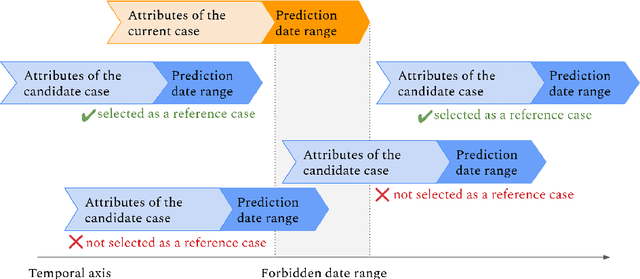

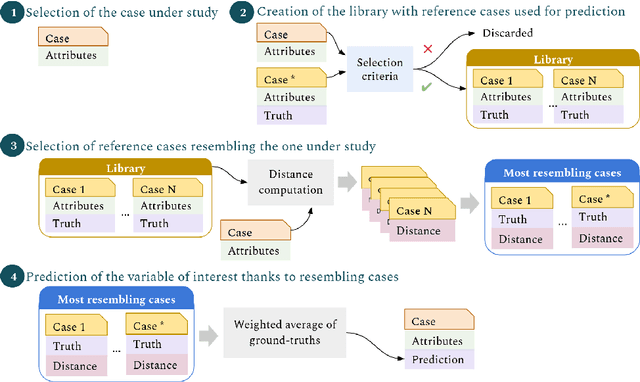
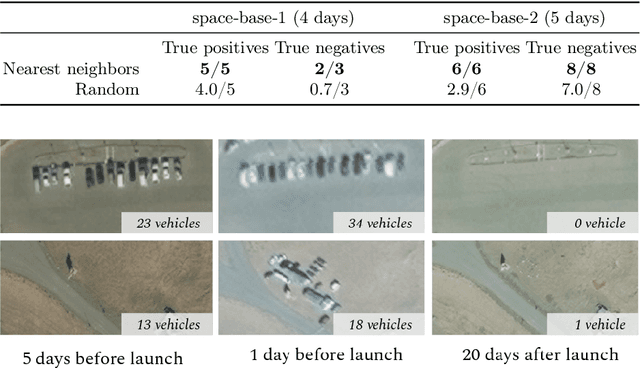
Abstract:Satellite imagery is now widely used in the defense sector for monitoring locations of interest. Although the increasing amount of data enables pattern identification and therefore prediction, carrying this task manually is hardly feasible. We hereby propose a cased-based reasoning approach for automatic prediction of rare events on strategic sites. This method allows direct incorporation of expert knowledge, and is adapted to irregular time series and small-size datasets. Experiments are carried out on two use-cases using real satellite images: the prediction of submarines arrivals and departures from a naval base, and the forecasting of imminent rocket launches on two space bases. The proposed method significantly outperforms a random selection of reference cases on these challenging applications, showing its strong potential.
Subjective and Objective Visual Quality Assessment of Textured 3D Meshes
Feb 08, 2021
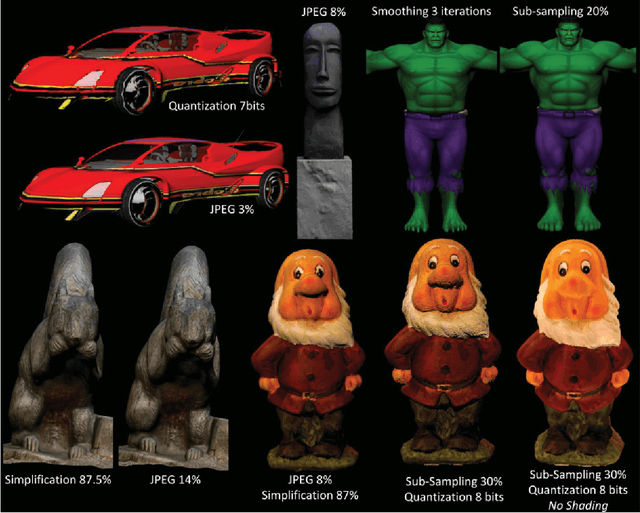

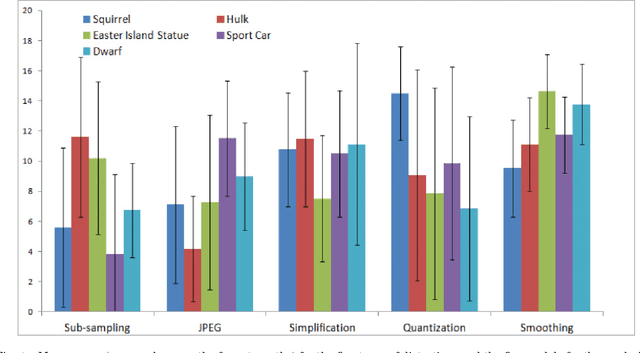
Abstract:Objective visual quality assessment of 3D models is a fundamental issue in computer graphics. Quality assessment metrics may allow a wide range of processes to be guided and evaluated, such as level of detail creation, compression, filtering, and so on. Most computer graphics assets are composed of geometric surfaces on which several texture images can be mapped to 11 make the rendering more realistic. While some quality assessment metrics exist for geometric surfaces, almost no research has been conducted on the evaluation of texture-mapped 3D models. In this context, we present a new subjective study to evaluate the perceptual quality of textured meshes, based on a paired comparison protocol. We introduce both texture and geometry distortions on a set of 5 reference models to produce a database of 136 distorted models, evaluated using two rendering protocols. Based on analysis of the results, we propose two new metrics for visual quality assessment of textured mesh, as optimized linear combinations of accurate geometry and texture quality measurements. These proposed perceptual metrics outperform their counterparts in terms of correlation with human opinion. The database, along with the associated subjective scores, will be made publicly available online.
Quality Measures of Parameter Tuning for Aggregated Multi-Objective Temporal Planning
May 10, 2013



Abstract:Parameter tuning is recognized today as a crucial ingredient when tackling an optimization problem. Several meta-optimization methods have been proposed to find the best parameter set for a given optimization algorithm and (set of) problem instances. When the objective of the optimization is some scalar quality of the solution given by the target algorithm, this quality is also used as the basis for the quality of parameter sets. But in the case of multi-objective optimization by aggregation, the set of solutions is given by several single-objective runs with different weights on the objectives, and it turns out that the hypervolume of the final population of each single-objective run might be a better indicator of the global performance of the aggregation method than the best fitness in its population. This paper discusses this issue on a case study in multi-objective temporal planning using the evolutionary planner DaE-YAHSP and the meta-optimizer ParamILS. The results clearly show how ParamILS makes a difference between both approaches, and demonstrate that indeed, in this context, using the hypervolume indicator as ParamILS target is the best choice. Other issues pertaining to parameter tuning in the proposed context are also discussed.
* arXiv admin note: substantial text overlap with arXiv:1305.1169
Multi-Objective AI Planning: Comparing Aggregation and Pareto Approaches
May 06, 2013



Abstract:Most real-world Planning problems are multi-objective, trying to minimize both the makespan of the solution plan, and some cost of the actions involved in the plan. But most, if not all existing approaches are based on single-objective planners, and use an aggregation of the objectives to remain in the single-objective context. Divide and Evolve (DaE) is an evolutionary planner that won the temporal deterministic satisficing track at the last International Planning Competitions (IPC). Like all Evolutionary Algorithms (EA), it can easily be turned into a Pareto-based Multi-Objective EA. It is however important to validate the resulting algorithm by comparing it with the aggregation approach: this is the goal of this paper. The comparative experiments on a recently proposed benchmark set that are reported here demonstrate the usefulness of going Pareto-based in AI Planning.
Multi-Objective AI Planning: Evaluating DAE-YAHSP on a Tunable Benchmark
Dec 20, 2012



Abstract:All standard AI planners to-date can only handle a single objective, and the only way for them to take into account multiple objectives is by aggregation of the objectives. Furthermore, and in deep contrast with the single objective case, there exists no benchmark problems on which to test the algorithms for multi-objective planning. Divide and Evolve (DAE) is an evolutionary planner that won the (single-objective) deterministic temporal satisficing track in the last International Planning Competition. Even though it uses intensively the classical (and hence single-objective) planner YAHSP, it is possible to turn DAE-YAHSP into a multi-objective evolutionary planner. A tunable benchmark suite for multi-objective planning is first proposed, and the performances of several variants of multi-objective DAE-YAHSP are compared on different instances of this benchmark, hopefully paving the road to further multi-objective competitions in AI planning.
Divide-and-Evolve: a New Memetic Scheme for Domain-Independent Temporal Planning
Jan 09, 2006

Abstract:An original approach, termed Divide-and-Evolve is proposed to hybridize Evolutionary Algorithms (EAs) with Operational Research (OR) methods in the domain of Temporal Planning Problems (TPPs). Whereas standard Memetic Algorithms use local search methods to improve the evolutionary solutions, and thus fail when the local method stops working on the complete problem, the Divide-and-Evolve approach splits the problem at hand into several, hopefully easier, sub-problems, and can thus solve globally problems that are intractable when directly fed into deterministic OR algorithms. But the most prominent advantage of the Divide-and-Evolve approach is that it immediately opens up an avenue for multi-objective optimization, even though the OR method that is used is single-objective. Proof of concept approach on the standard (single-objective) Zeno transportation benchmark is given, and a small original multi-objective benchmark is proposed in the same Zeno framework to assess the multi-objective capabilities of the proposed methodology, a breakthrough in Temporal Planning.
 Add to Chrome
Add to Chrome Add to Firefox
Add to Firefox Add to Edge
Add to Edge